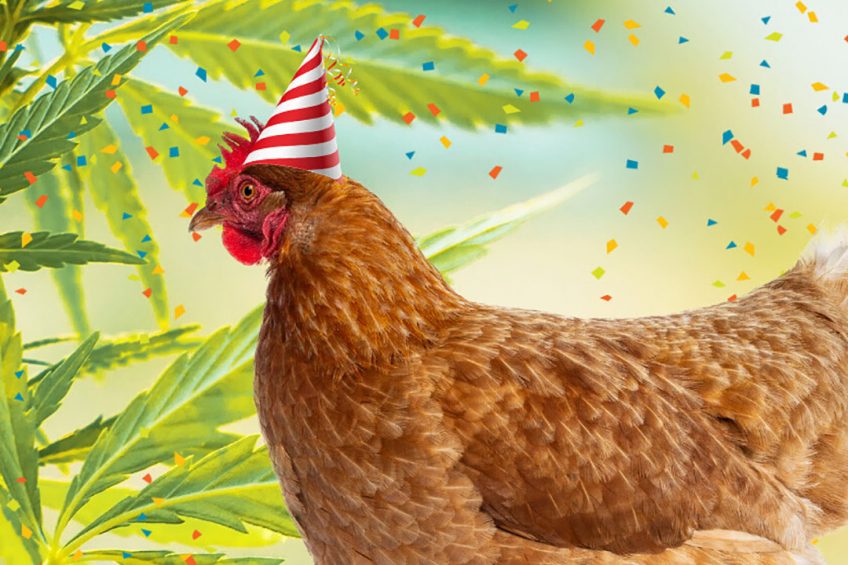US: First application for hemp as feed for poultry

A submission has been made in the US for hemp to become an approved animal feed ingredient. Once approved, this application will allow hemp seed meal and cake to be legally used as commercial feed for laying hens.
The first submission for hemp to become an approved animal feed ingredient in the US has been put forward for consideration by the Association of American Feed Control Officials and the US Food and Drug Association – Center for Veterinary Medicine (FDA-CVM).
Led by the Hemp Feed Coalition leadership, hemp and feed industry experts, and researchers, this submission is a culmination of a 2-year long effort of an ingredient investigation of hemp seedcake and meal and a clinical trial to demonstrate the safety and efficacy of hemp for laying hens. Hemp seed cake and meal has, on average, about 30% protein, 10% fat, and a range of carbohydrate composition (see Table).
Hemp by-products
“For the Hemp Feed Coallition, our goal is to find a use for the highly nutritious by-products of hemp production and processing,” says Hunter Buffington, executive director of the Hemp Feed Coalition.
Like most agriculture commodities, these products have value as ingredients in human and animal food markets and we are working to add this tool to the hemp farmers’ toolbox to stabilise the supply chain, create new markets and help farmers access additional streams of revenue for their farm products.”
Safety standards
To meet the FDA-CVM standards of safety and efficacy, the hemp industry shared Certificates of Analysis from across the US to demonstrate hempseed cake and meal can be consistently grown and processed. This effort was combined with expertise from hemp and feed industry leaders, research, and the support of IND HEMP to bring the submission to the FDA-CVM for scientific review.
“We are working on the first step of being able to feed the hens hemp as a legal feed,” says Buffington. “After this we must address the safety of humans consuming those eggs. But, this is one case where the chicken comes before the egg!”
Research shows fly larvae can improve leg health
A recent study at Wageningen University and Research used live black soldier fly larvae as an environmental enrichment tool.
Buffington notes that hemp processing is on schedule to meet the growing demand in the US, which means more by-products that can become animal feed ingredients. Volumes, he says, are still moderate. “When you consider that not all states are cultivating hemp and the states that began as soon as legally possible will be harvesting hemp for the 6th time in 2021, we have a lot of room to grow capacity.”
Other by-products
Now that the first application has been submitted, the HFC will turn its focus to research on other hemp by-products: oil, sediment, hulls, pulp and screenings to investigate their benefit and safety as feed ingredients. In addition, this work will include the clinical trials necessary to add ruminates to the hempseed meal application that was submitted. “Opening new markets is our secondary mission,” says Buffington. “Commoditising safe and healthy by-products from hemp processing will provide farmer and processor revenue and a build a steady supply as the industry matures in the next few years.”












